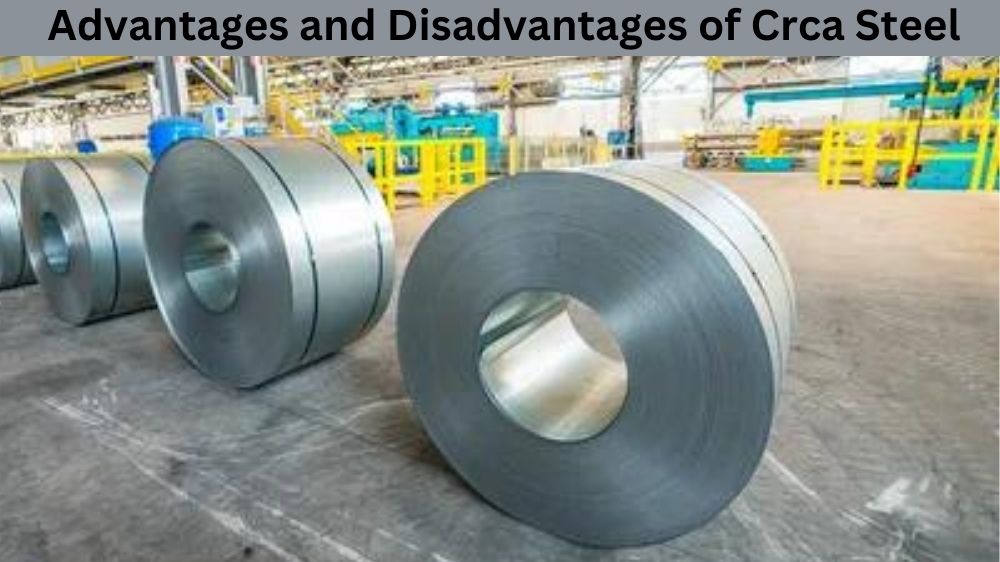
Advantages and Disadvantages of Crca Steel
Regarding engineering materials, CRCA steel is an excellent choice for various applications. However, just like any other material, CRCA steel also has its own advantages and disadvantages. This blog post will take a closer look at CRCA Steel to help you understand its pros and cons.
What is Crca Steel?
CRCA steel stands for Cold Rolled Close Annealed Steel and is one of the most commonly used steel forms in the construction industry. Its strength, malleability and ductility characterise it, making it ideal for use in structural applications like bridges, buildings, tanks and other large-scale projects.
CRCA steel can be created using cold rolling—a manufacturing process that involves pressing metal between rollers at a temperature below the metal’s recrystallization temperature. This ensures that the final product maintains a uniform thickness throughout. The annealing process further strengthens the material by heating it to reduce stress points while increasing its ductility and malleability.
As compared to other types of steels, such as Hot Rolled (HR) or Roll Formed (RFDE), CRCA has better corrosion resistance due to its tight chemical composition as well as superior mechanical properties due to its increased tensile strength from cold working processes like rolling or stretching out aluminium sheet into thinner sheets with more intricate shapes without causing any deformation or cracking in them. Additionally, since less energy is consumed during fabrication when using CRCA steel over HR/RFDE types makes it much more cost-effective than their counterparts in certain applications where low weight and high strength are important factors in design considerations -such as aerospace structures or vehicles bodies etc.- making it an ideal choice for numerous industries around the world!
For more information visit Kapilsteel.com
Advantages of CRCA Steel
One of the most significant advantages of CRCA steel is its high strength-to-weight ratio. Compared to other types of steel, CRCA steel is lighter in weight, making it an ideal choice for weight-sensitive applications. CRCA steel has excellent mechanical properties, including high tensile strength, good bending capability, toughness, and hardness. This makes it ideal for constructing buildings, bridges, and other heavy machinery.
Another advantage of CRCA steel is that it is highly durable and resistant to rust and corrosion. The cold-rolling process gives it a smooth and uniform surface, making it less susceptible to surface damage and providing greater resistance to wear and tear. Additionally, CRCA steel is available in various shades, making it ideal for use in decorative applications such as furniture, automobile components, and household appliances.
Disadvantages of CRCA Steel
One of the significant disadvantages of CRCA steel is that it is brittle and prone to cracking under extreme stress. This means it may not be suitable for use in applications requiring high flexibility or durability, such as springs or machine parts. Additionally, CRCA steel may be susceptible to corrosion if not correctly maintained, which could lead to structural weaknesses and component failure.
Another disadvantage of CRCA steel is that it is more expensive than other types of steel. This is primarily due to the added processing steps of producing CRCA steel, including cold rolling, pickling, and annealing. Furthermore, it may only be readily available in some regions, limiting it in some markets.
Environmental Impact
CRCA steel is also known for its low environmental impact compared to other types of steel. Since the cold-rolling process requires less energy, it generates fewer greenhouse gas emissions, making it a more sustainable and eco-friendly option. Moreover, CRCA steel is 100% recyclable, contributing to the circular economy and reducing the environmental footprint of the steel industry.
Applications of CRCA Steel
Due to its unique properties, CRCA steel is used in various applications, including automotive components, electrical appliances, construction equipment, and industrial machinery. Its high strength-to-weight ratio and excellent durability make it ideal for lightweight structures such as roofing, cladding, and decking. Its corrosion resistance also makes it popular in the marine industry, where it is used for boat hulls and marine equipment.
Conclusion:
CRCA steel is a versatile and widely used engineering material that offers many benefits in construction and manufacturing. Its high strength-to-weight ratio, durability, and corrosion resistance make it an ideal material for many different applications. However, CRCA steel has some drawbacks, including brittleness, susceptibility to cracking, and higher costs. When deciding to use CRCA steel, it’s important to weigh the pros and cons to determine its suitability for the specific application.